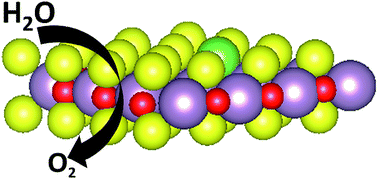Surface reorganization engineering of the N-doped MoS2 heterostructures MoOx@N-doped MoS2−x by in situ electrochemical oxidation activation for efficient oxygen evolution reaction†
Abstract
Extensive experiments have demonstrated that molybdenum disulfide-based catalysts have excellent performance in hydrogen evolution; on the other hand, only few studies have been reported on the application of molybdenum disulfide-based catalysts in the oxygen evolution reaction. Herein, we report that surface reorganization engineering of nitrogen-doped MoS2 by in situ electrochemical oxidation successfully results in its significantly enhanced OER activity. In this study, the construction of the unique heterostructure MoOx@N-doped MoS2−x was performed in situ by electrochemical oxidation; based on the theoretical and experimental results, the electronic characteristics of the catalyst surface were adjusted, whereas the intrinsic properties of N-doped MoS2 were maintained. Due to the moderate amount of MoOx formed on the surface of N-doped MoS2, an optimized performance was achieved: excellent electrocatalytic activity with the very low overpotential of 270 mV at 10 mA cm−2, the small Tafel slope of 61 mV dec−1, and satisfactory stability. Our study provides a viable method to achieve efficient electrocatalysts via non-metal element doping and in situ electrochemical oxidation tuning, which result in the formation of the unique heterostructure of MoOx@N-doped MoS2−xin situ. This new type of core–shell heterostructure opens up a novel avenue for the rational design of high-performance OER electrocatalysts.



 Please wait while we load your content...
Please wait while we load your content...